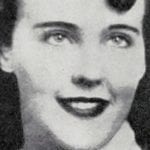 Politics
Politics  Politics
Politics  Weird Stuff
Weird Stuff 10 Eggs-traordinarily Odd Eggs
 History
History 10 Desperate Last Stands That Ended in Victory
 Animals
Animals Ten Times It Rained Animals (Yes, Animals)
 Mysteries
Mysteries 10 Devastating Missing Child Cases That Remain Unsolved
 Creepy
Creepy 10 Scary Tales from the Middle Ages That’ll Keep You up at Night
 Humans
Humans 10 One-of-a-kind People the World Said Goodbye to in July 2024
 Movies and TV
Movies and TV 10 Holiday Movies Released at Odd Times of the Year
 Politics
Politics 10 Countries Where Religion and Politics Are Inseparable
 Weird Stuff
Weird Stuff 10 Freaky Times When Famous Body Parts Were Stolen
 Politics
Politics The 10 Most Bizarre Presidential Elections in Human History
 Weird Stuff
Weird Stuff 10 Eggs-traordinarily Odd Eggs
 History
History 10 Desperate Last Stands That Ended in Victory
Who's Behind Listverse?

Jamie Frater
Head Editor
Jamie founded Listverse due to an insatiable desire to share fascinating, obscure, and bizarre facts. He has been a guest speaker on numerous national radio and television stations and is a five time published author.
More About Us Animals
Animals Ten Times It Rained Animals (Yes, Animals)
 Mysteries
Mysteries 10 Devastating Missing Child Cases That Remain Unsolved
 Creepy
Creepy 10 Scary Tales from the Middle Ages That’ll Keep You up at Night
 Humans
Humans 10 One-of-a-kind People the World Said Goodbye to in July 2024
 Movies and TV
Movies and TV 10 Holiday Movies Released at Odd Times of the Year
 Politics
Politics 10 Countries Where Religion and Politics Are Inseparable
 Weird Stuff
Weird Stuff 10 Freaky Times When Famous Body Parts Were Stolen
10 Tragic Facts From The Life Of Queen Victoria
Queen Victoria may have enjoyed the splendors of being royalty, but, before taking the throne, her childhood was miserable and tragic. She lived a confined life with a difficult mother and went through some horrible things that would shape the queen she would become.
10Her Father Died Before She Turned One

Victoria never knew her father. He died before she turned one; before she’d formed a single memory. It was the first in a series of horrible tragedies that would end up putting her on the throne.
When she was born, no one expected Victoria to grow up a queen. Her father was the king’s fourth child, and she was behind a long line of heirs. It took the death of three uncles and five cousins to make her the rightful heir to the throne of England.
John Conroy, her mother’s secretary, was determined to make it happen. While she was still third in line for the throne, he started an active propaganda battle to turn Victoria into a queen. He lobbied parliament to refer to Victoria as the “heir presumptive,” trying to lock her role into the public’s mind before she could be replaced.
Conroy’s campaign turned the family against each other. Her uncle, King William IV, tried to get custody of Victoria so that he could control the heir to the throne. Conroy, in retaliation, ran campaigns against the king, calling him a degenerate who tainted his court with his bastard children.
Victoria was only a child, with no idea why she was so important. But by the time she was five, her family was at each other’s throats fighting for her.
9Her Mother Couldn’t Handle Her

Victoria was a stubborn child. She fought every order her mother gave her. Her mother nicknamed her “Pocket Hercules” for her strong will. It was a cute name for a child but not one that came from affection. Instead, it came from the vicious struggles in an unhappy home.
“Today the little mouse was so unmanageable that I nearly cried,” her mother wrote in her diary. In Victoria’s early years, her mother’s diary was filled with these desperate cries for help against the tyranny of her toddler.
Victoria’s very first memory was of fighting with her mother. She had gotten in trouble, and her mother had threatened that her uncle would punish her if she cried. Ever defiant, Victoria spent the next weeks screaming as loud as she could every time her uncle walked by.
8She Wasn’t Allowed To Play With Other Children

Unable to handle her and afraid of the king’s influence, her mother gave near-complete control to John Conroy. At his suggestion, Victoria, from the age of five, was put into a program he called the “Kensington System” that locked her away from everyone but him.
Victoria was put under constant observation. Every single thing she did was reported to Conroy, and her caretakers were under strict orders to keep outside influences away from the princess. Other than her siblings and Conroy’s daughter, she was not allowed to play with other children. Nor could she be left to herself for as much as a second. At night, a governess had to stay awake and watch her while she slept.
Conroy bragged about his system, showing it off as the proper way to ensure a good, moral child. Victoria herself, though, hated it. She was horribly unhappy throughout her entire childhood. For her whole life, she would never hate anyone as much as she hated John Conroy.
7John Conroy May Have Been Her Father

For all she hated him, Victoria may have had more of Conroy in her than she realized. Throughout her life, rumors abounded that her father wasn’t really Prince Edward. Many believed that her mother had an affair with the adviser she stuck to so closely, and that Victoria was the bastard daughter of John Conroy.
The Duke of Wellington claimed that Queen Victoria had all but admitted to it. He alleged that Victoria told him she’d caught her mother and Conroy engaged in “some familiarities.” Even if he wasn’t her father, then, her mother’s relationship with him was more than just professional.
Some modern historians have taken these rumors for truth. Victoria, they point out, carried hemophilia B, a condition that’s usually passed on through genetics. She was the first in her family to carry the disease, and she passed it on to her children.
It’s by no means definitive proof. Still, Victoria would have heard the rumors. In the back of her mind, she would have struggled with the fear that her worst enemy might be her biological father.
6Her Mother Tried To Steal The Throne

King William IV did everything in his power to keep Victoria’s mother from becoming the queen regent. If he died while Victoria was still a minor, her mother would take the throne. William IV publicly declared that he would live until Victoria was 18—and he did, out of sheer stubbornness.
When it was clear she wouldn’t become queen regent, Victoria’s mother took a more direct approach to seize power. After a long tour, Victoria had developed typhoid fever. For five weeks, she was unable to walk. She lay in bed, her hair falling out in clumps, begging for a doctor. But no matter how much she pleaded, her mother and Conroy wouldn’t let anyone bring one in.
They took her daughter’s declining health as an opportunity. While her daughter suffered, she and Conroy tried to pressure her into signing papers making Conroy her adviser and treasurer, which would give Conroy power over all of her affairs. They forced it on her as hard as they could. Conroy even threatened to lock her up and starve her if she didn’t sign.
Finally, Victoria’s governess, Louise Lehzen, couldn’t take it anymore. She called a doctor in secret and got Victoria help. Victoria nearly died, but she didn’t sign the papers.
“I resisted,” she wrote in her diary, “in spite of my illness and their harshness.”
5She Didn’t Experience Happiness Until She Was Queen

Becoming queen was Victoria’s first taste of freedom. She called that first breath of freedom “the pleasantest summer I ever passed in my life.” Looking back on her life at home in contrast to her new life of freedom, she wrote, “I never was happy until I was 18.”
Victoria was still a girl when she took the throne. During her coronation, her naivete played out in some charming ways. Lord Rolle, a man who was nearly 90 years old, tripped on his way up the stairs. Victoria instinctively stood up to help him up. She was stopped, though, and told it wasn’t royal behavior.
“May I not get up and meet him?” Victoria protested. She rose from her throne and walked to aging man to save him from exerting himself too far. The crowd was impressed. Through the small act, she won the hearts of her people.
The coronation was the experience of a lifetime. She wrote in her diary, “I shall ever remember this day as the proudest of my life.” As soon as it was done, though, she rushed home. Her dog Dash had not yet had his daily bath. In her first act as queen, she scrubbed the pup clean in the tub.
4She Kicked John Conroy Out

One of Victoria’s first orders as queen was for John Conroy to leave the family. He had ruined her childhood. He would not ruin her reign.
Conroy, knowing he had failed to become her adviser, was still fighting for power. He demanded a pension of £3,000 a year and a seat on the Privy Council. To avoid controversy, the queen let him have most of what he asked for, but she made him leave her and her family alone.
In his place, she offered Louise Lehzen, pictured above, a place as her lady attendant. The governess who had saved her life was rewarded for her devotion with a place close the queen. Lehzen, though, refused. “My dear Lehzen will always be with me as my friend,” Victoria wrote, “but will take no situation with me, and I think she is right.”
Instead, Victoria would rule on her own, without the influence of Conroy or her mother. After meeting with the Prime Minister for the first time as queen, she wrote proudly in her diary that she had gone “quite alone, as I shall always do all my ministers.”
3She Married Her Cousin To Get Rid Of Her Mother

In the first days of her reign, Victoria’s mother lived in the palace with her. By law, she was required to live with her mother until she was married. Her mother knew, though, that her days were numbered. Fearing the future, she told her daughter, “The queen should forgive what displeased the princess.”
Victoria would not forgive. She got married little more than six months after her coronation. She wasn’t even willing to wait for the man to make the move. Victoria proposed to him. Her mother was kicked out of the castle and sent out of town.
She married her first cousin, Prince Albert of Belgium. It served a purpose, but she truly was in love. Albert, she wrote, gave her “feelings of heavenly love and happiness I never could have hoped to have felt before.”
On their wedding night, the newlyweds made love until dawn. With her mother and Conroy out of her life, Victoria was, for the first time, truly happy. She called the night “bliss beyond belief,” writing, “Oh! Was ever woman so blessed as I am.”
2Her Husband Died Young

Prince Albert was 42 years old when he died of typhoid fever. He and Victoria had been married for 21 happy years. Her happiness died with him. For the next two years, she wouldn’t make a single public appearance.
“This day last year found us so perfectly happy,” Victoria wrote in her diary when, after months of silence, she found the strength to put pen to paper. “With what a heavy broken heart I enter on a new year without him.”
She mourned him for the rest of her days. For the next 40 years, she would wear nothing but black. The servants were required to keep his private rooms just as he had kept them in his life. By her order, every morning, servants brought hot water for his shave to his empty room.
In an echo of what her mother had done to her, Victoria blamed her eldest son for Albert’s death. From that day on, she treated him with revulsion, writing, “I never can or shall look at him without a shudder.”
1Her Mother Died The Same Year

Victoria barely spoke to her mother after she became queen. When she had children, she allowed her to visit her home, but they would never share the warm relationship of a mother and her child.
Then, in 1859, her mother became deathly ill. It affected Victoria more than she’d expected. “I hardly myself knew how I loved her,” Victoria wrote, “till I saw looming in the distance the fearful possibility of what I will not mention.”
Her mother recovered, but she would get sick again. She struggled with her health for years. Her battle ended, though, in 1861. Victoria’s mother died on the same year as he husband.
“My childhood all seems to crowd in upon me,” Victoria wrote on the day of her mother’s death. There was more truth in it than she even realized. She would visit her mother’s home shortly after, and there she would see the pieces of her childhood before her.
For the first time since she’d kicked her out, Victoria stepped into the home of the mother she’d believed hated her. There, inside, was every one of Victoria’s childhood possession. She’d kept every pair of shoes she’d worn as a baby and every toy she’d called her own.
“Never until then,” Victoria wrote in her diary that night, “did I know she loved me.”








